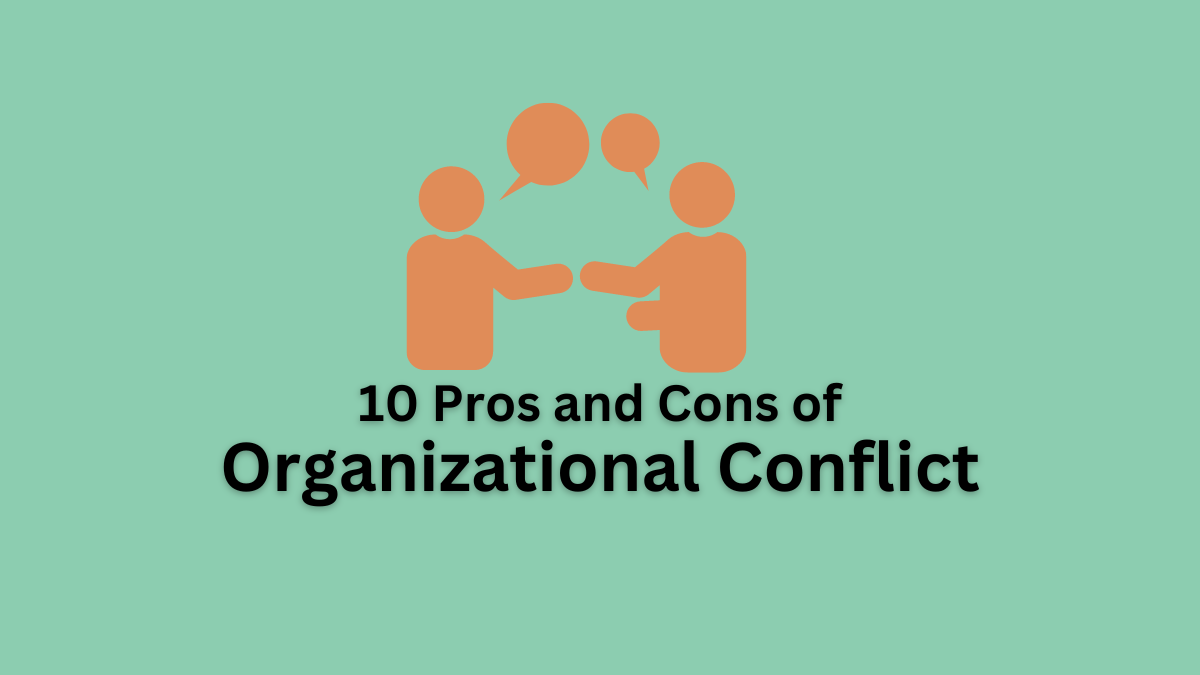What is Organizational Conflict?
Organizational conflict refers to disagreements or clashes between individuals or groups within a company that arise from differing values, goals, perceptions, or attitudes. It is not merely a disagreement but a process involving multiple interactions that can significantly impact the organization’s performance.
According to Guetzkow (1954), for conflict to be meaningful, it must be acknowledged by those involved; otherwise, it remains unresolved and unproductive.
Conflicts are a natural part of organizational life and can influence how teams function and how decisions are made. While often seen as a disruption, conflict can also cause positive change and growth.
How Does Organizational Conflict Work in Business?
In a business setting, conflict can manifest in various forms, including interpersonal disputes between employees, disagreements between departments, or conflicts over resources and priorities. These conflicts can arise from:
- Differences in Goals: Employees or departments may have conflicting objectives or priorities, leading to disputes over resources or strategic direction.
- Divergent Values: Personal values or work ethics may differ, causing friction in teamwork or decision-making processes.
- Miscommunication: Poor communication or misunderstandings can result in conflicts over expectations, responsibilities, or project details.
- Resource Allocation: Competition for limited resources, such as budget, time, or equipment, can lead to conflicts between teams or departments.
- Role Ambiguity: Unclear roles and responsibilities can create conflicts as employees may step on each other’s toes or feel overburdened.
5 Major Pros of Organizational Conflict
Conflict in an organization is not always bad, it also offers various benefits. Here are five to mention:
Encourages Innovation and Problem-Solving
Conflicts often prompt individuals and teams to explore new ideas and solutions. When different viewpoints clash, it can lead to more creative thinking and innovative approaches to problems. This process encourages critical thinking and can result in better solutions and improvements.
Example: In a product development team, disagreements over design features can lead to innovative ideas that enhance the product’s functionality and appeal.
Stimulates Healthy Debate
Conflict encourages debate and discussion, which can be beneficial for decision-making. Healthy debates allow employees to express their opinions, challenge assumptions, and contribute to a more thorough evaluation of ideas and strategies.
Example: During strategic planning, conflicting opinions on market approaches can lead to a more robust and well-rounded business plan.
Read More: Pros and Cons of Teamwork
Highlights Weaknesses and Areas for Improvement
Conflicts can reveal underlying issues or weaknesses within the organization. By addressing these conflicts, businesses can identify and rectify problems, leading to improvements in processes, communication, and overall efficiency.
Example: Disagreements over workflow may uncover inefficiencies or gaps in processes, prompting necessary changes and enhancements.
Strengthens Team Dynamics
Successfully navigating conflicts can strengthen team cohesion and build trust among team members. Working through disagreements can foster a deeper understanding of each other’s perspectives and improve collaboration.
Example: Resolving interpersonal conflicts within a team can lead to stronger relationships and better teamwork in future projects.
Improves Decision-Making
Conflict can lead to more thorough decision-making processes. When various perspectives are considered and debated, the resulting decisions are often more informed and balanced, reflecting a broader range of insights and considerations.
Example: Conflicting viewpoints on a marketing strategy can result in a more comprehensive plan that better addresses diverse customer needs.
Read More: Pros and Cons of Groupwork
5 Major Cons of Organizational Conflict
Organizational conflicts also hurt organizational performance. Here are five disadvantages of conflict to mention:
Emotional Toll and Stress
Conflicts can have a significant emotional impact on employees, leading to stress, frustration, and decreased morale. Prolonged or intense conflicts can create a toxic work environment, affecting overall job satisfaction and productivity.
Example: Ongoing conflicts between team members can lead to a decline in morale, increased absenteeism, and reduced motivation.
Operational Disruptions
Conflicts can disrupt normal business operations, leading to delays and inefficiencies. Disagreements over resources, priorities, or procedures can impact productivity and hinder the achievement of business objectives.
Example: Disputes over project deadlines can delay deliverables and affect client satisfaction and project outcomes.
Risk of Escalation
If not managed effectively, conflicts can escalate and become more challenging to resolve. Unresolved or poorly handled conflicts can lead to larger issues, affecting team dynamics and organizational performance.
Example: Minor disagreements over responsibilities can escalate into significant conflicts that impact team cohesion and collaboration.
Read More: Pros and Cons of Business Ethics
Potential for Legal Issues
Some conflicts, particularly those involving discrimination or harassment, can lead to legal issues for the organization. Businesses need to be aware of employment laws and ensure that conflicts are managed in a way that prevents legal complications.
Example: Conflicts involving allegations of harassment or discrimination may result in legal action and damage to the organization’s reputation.
Negative Impact on Team Dynamics
Persistent or unresolved conflicts can damage team dynamics and erode trust among team members. This damage can hinder collaboration, communication, and overall effectiveness, impacting the team’s ability to work together efficiently.
Example: Ongoing conflicts between departments can lead to decreased cooperation and negatively affect interdepartmental relationships.
When Conflict is Effective?
Conflict becomes effective when it is managed constructively and leads to positive outcomes. Effective conflict management involves:
- Open Communication: Encouraging honest and respectful dialogue helps address issues and find solutions. Ensuring that all parties have the opportunity to express their views and concerns is crucial.
- Clear Policies: Implementing and communicating clear conflict resolution policies helps guide employees in addressing conflicts appropriately and ensures consistency in handling disputes.
- Mediation and Facilitation: Involving neutral third parties or mediators can help facilitate discussions and guide parties toward mutually acceptable resolutions.
- Focus on Solutions: Emphasizing finding practical solutions rather than assigning blame helps resolve conflicts and address underlying issues.
- Continuous Monitoring: After resolving a conflict, monitoring the situation to ensure that the resolution is effective and that similar issues do not resurface is essential for maintaining a positive work environment.
Read Next: Pros and Cons of Autocratic Leadership
